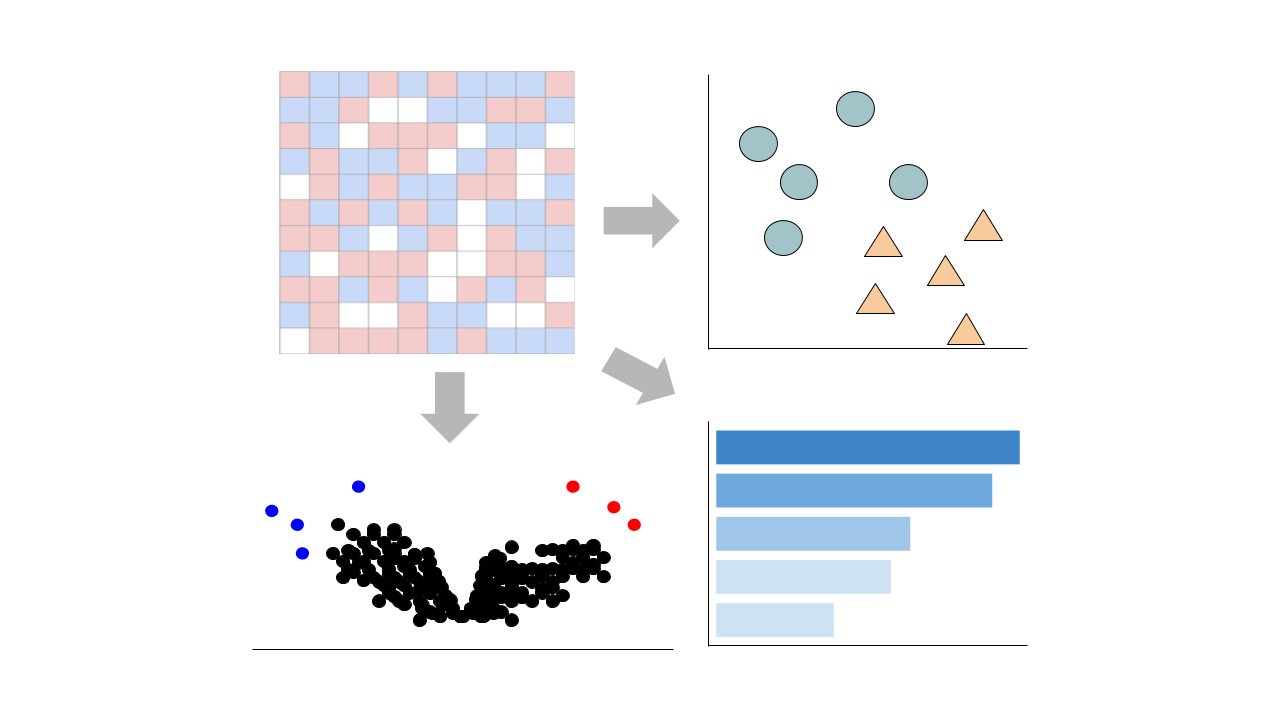 Gene counts are sourced from ARCHS4, which provides uniform alignment of GEO samples.
You can learn more about ARCHS4 and its pipeline here.
Gene counts are sourced from ARCHS4, which provides uniform alignment of GEO samples.
You can learn more about ARCHS4 and its pipeline here.
Select conditions below to toggle them from the plot:
| GROUP | CONDITION | SAMPLES |
|---|---|---|
| Brown Adipose Tissue |
GSM3538046 GSM3538047 GSM3538048 GSM3538049
|
|
|
GSM3538042 GSM3538043 GSM3538044 GSM3538045
|
Submission Date: Jan 03, 2019
Summary: We describe a role for the poorly annotated protein PGRMC2 in retrograde transport of heme from mitochondria to the nucleus. In absence of PGRMC2, less signaling heme reaches the nucleus, with a consequent alteration of heme-sensitive transcriptional programs that ultimately engenders severe mitochondrial dysfunction in brown adipocytes. These mitochondrial defects compromise, not only the primary function of BAT, to activate thermogenesis and preserve body temperature, but also its contribution to maintain systemic glucose and lipid homeostasis.
GEO Accession ID: GSE124621
PMID: 31748741
Submission Date: Jan 03, 2019
Summary: We describe a role for the poorly annotated protein PGRMC2 in retrograde transport of heme from mitochondria to the nucleus. In absence of PGRMC2, less signaling heme reaches the nucleus, with a consequent alteration of heme-sensitive transcriptional programs that ultimately engenders severe mitochondrial dysfunction in brown adipocytes. These mitochondrial defects compromise, not only the primary function of BAT, to activate thermogenesis and preserve body temperature, but also its contribution to maintain systemic glucose and lipid homeostasis.
GEO Accession ID: GSE124621
PMID: 31748741
Visualize Samples
 Visualizations are precomputed using the Python package scanpy on the top 5000 most variable genes.
Visualizations are precomputed using the Python package scanpy on the top 5000 most variable genes.
Precomputed Differential Gene Expression
 Differential expression signatures are automatically computed using the limma R package.
More options for differential expression are available to compute below.
Differential expression signatures are automatically computed using the limma R package.
More options for differential expression are available to compute below.
Signatures:
Select conditions:
Control Condition
Perturbation Condition
Only conditions with at least 1 replicate are available to select
 Differential expression signatures can be computed using DESeq2 or characteristic direction.
Differential expression signatures can be computed using DESeq2 or characteristic direction.
This pipeline enables you to analyze and visualize your bulk RNA sequencing datasets with an array of downstream analysis and visualization tools. The pipeline includes: PCA analysis, Clustergrammer interactive heatmap, library size analysis, differential gene expression analysis, enrichment analysis, and L1000 small molecule search.

 Chatbot
Chatbot Single Gene Queries
Single Gene Queries
 Gene Set Queries
Gene Set Queries
 Bulk Studies
Bulk Studies
 Single Cell Studies
Single Cell Studies
 Hypotheses
Hypotheses
 Resources
Resources
 Contribute
Contribute
 Downloads
Downloads About
About
 Help
Help